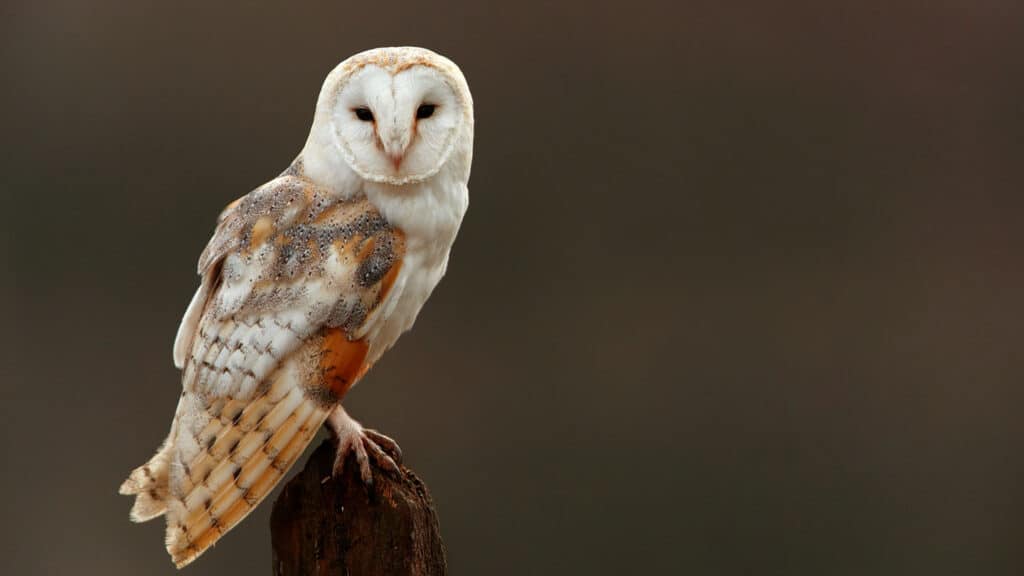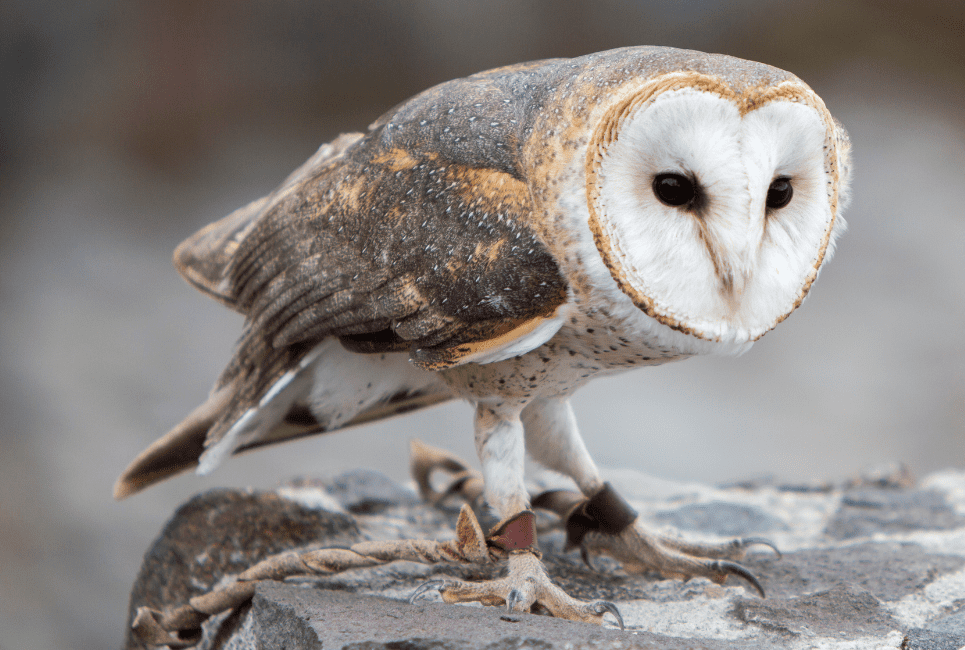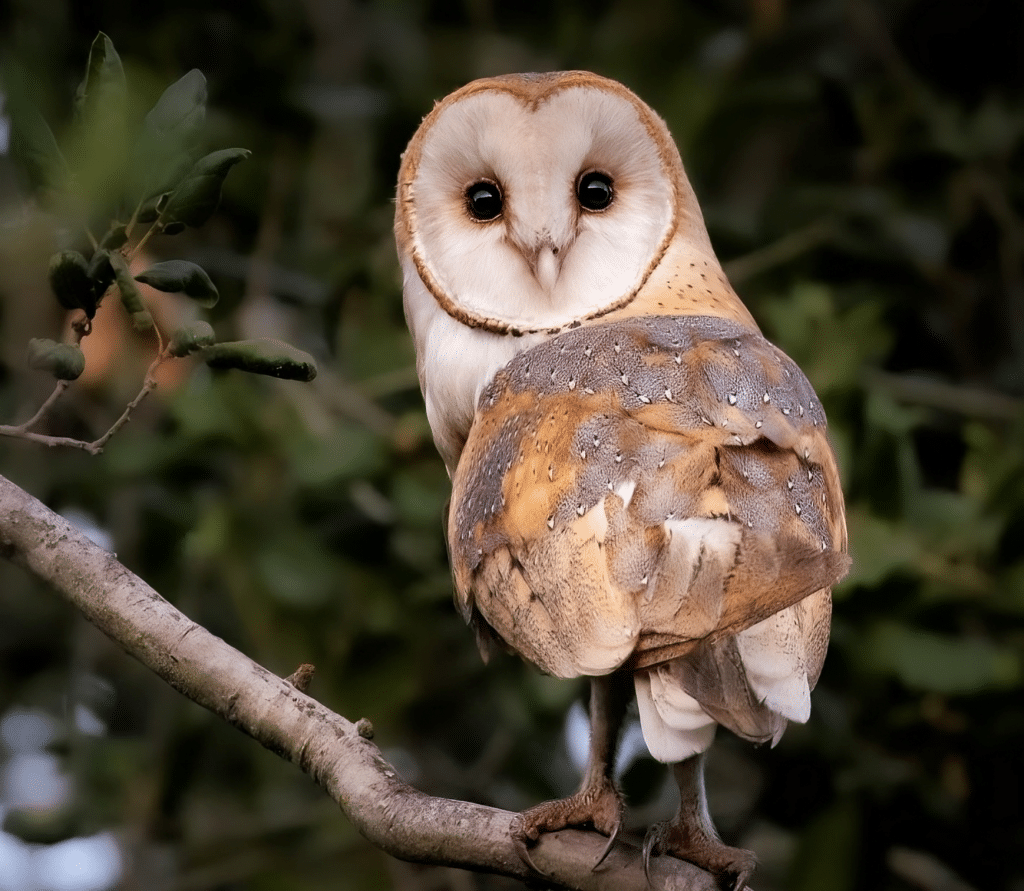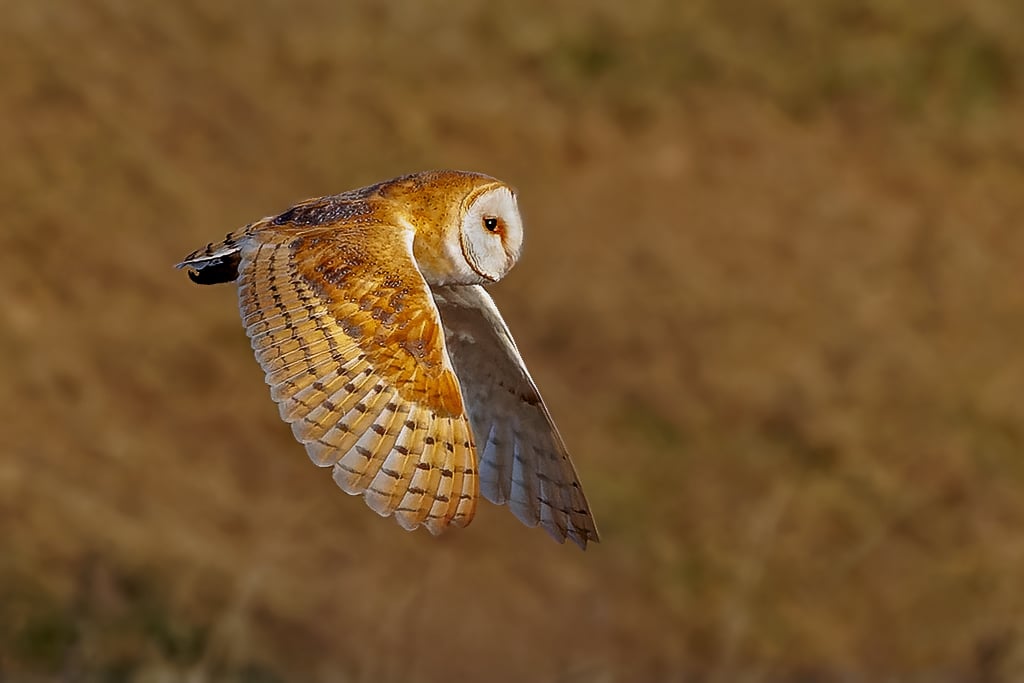The Barn Owl (Tyto alba) is a species of owl that can be found in various habitats across the globe. This article aims to provide an overview of the key aspects related to this avian species, including its habitat and range, physical characteristics, diet and feeding habits, breeding and reproduction, as well as its behaviour and communication patterns. Additionally, it will touch upon the threats faced by Barn Owls and their conservation status.
Habitat and Range
The barn owl (Tyto alba) is known to inhabit a wide range of habitats, including grasslands, woodlands, and farmlands. Its habitat range spans across various regions globally, from North America and Europe to Asia and Africa. This species has adapted well to diverse environments, allowing it to thrive in both rural and urban settings. The barn owl’s ability to occupy different habitats can be attributed to its versatile hunting behaviour and diet preferences. These owls primarily feed on small mammals such as rodents, which are abundant in grasslands and farmlands. Additionally, the barn owl’s migration patterns vary depending on its geographical location. In certain areas with harsh winters or limited food availability, some individuals may migrate towards more favourable regions during the colder months. These movements are often triggered by changes in prey populations or environmental conditions that affect their survival and reproductive success.
Physical Characteristics
Characterised by a heart-shaped facial disc and long wings, the barn owl possesses distinct physical features. These adaptations play a crucial role in its predator avoidance and nocturnal hunting strategies. The heart-shaped facial disc aids in sound localisation by capturing and funnelling sounds towards the owl’s ears, enabling it to accurately locate prey even in complete darkness. Furthermore, the barn owl’s large eyes are positioned forward on its face, providing binocular vision for precise depth perception during low-light conditions. Additionally, the soft feathers of the barn owl allow for silent flight, minimising noise that could alert potential prey or predators to its presence. The combination of these physical characteristics allows the barn owl to effectively navigate through its environment and successfully hunt at night while avoiding detection from other animals.

Diet and Feeding Habits
Adapted to a nocturnal lifestyle, the diet and feeding habits of Tyto alba are primarily focused on small mammals, such as mice and voles. The foraging behaviour of the barn owl involves flying silently through open habitats, using their exceptional hearing abilities to locate prey in complete darkness. Barn owls have specialised adaptations that aid them in capturing their preferred prey. These adaptations include acute hearing, which allows them to detect high-frequency sounds produced by rodents moving through vegetation or burrows. They also possess sharp talons and a hooked beak, which they use to grasp and kill their prey efficiently.
Prey selection is influenced by factors such as abundance and availability. Studies have shown that barn owls exhibit dietary flexibility, adjusting their diet based on the local availability of different small mammal species. This adaptability allows them to survive even when there are fluctuations in prey populations or habitat changes.
Breeding and Reproduction
Breeding and reproduction of Tyto alba is influenced by various factors, including seasonal changes in environmental conditions and the availability of suitable nesting sites. Barn owls exhibit distinct breeding cycles which are synchronised with environmental cues such as temperature and food availability.
Mating rituals play a crucial role in the reproductive process of barn owls, serving as a means for individuals to assess potential mates and establish pair bonds. These rituals often involve vocalisations, displays of physical agility, and courtship flights. Once pairs have formed, they engage in territorial behaviours around their chosen nesting site. The availability of suitable nesting sites is critical for successful reproduction, as barn owls rely on secure shelters such as tree cavities or man-made structures like barns or nest boxes.
Behaviour and Communication
Behavioural and communicative patterns in this particular species are influenced by a variety of factors, including social interactions, environmental cues, and reproductive needs. Social interactions play a crucial role in shaping the behaviour of barn owls. These birds engage in complex vocalisations to communicate with conspecifics.
Vocalisations serve multiple functions such as mate attraction, territorial defence, and parent-offspring communication. The specific vocalisations produced can vary depending on the context and the individuals involved. Barn owls also rely on environmental cues to guide their behaviour. For example, they use visual cues to locate prey during hunting sessions. Additionally, reproductive needs strongly influence their behaviour patterns as they engage in courtship displays to attract mates and establish breeding territories. Studying these behavioural and communicative patterns provides valuable insights into the adaptive strategies employed by barn owls in response to their social environment and ecological challenges.

Threats and Conservation Status
The conservation status of the barn owl species is influenced by a range of threats, including habitat loss, pesticide use, and road mortality. These threats are primarily driven by human activities and have significant implications for the long-term survival of the species. Habitat loss, resulting from agricultural intensification and urbanisation, reduces the availability of suitable nesting sites and prey abundance for barn owls.
Interesting Facts
The barn owl (Tyto alba) exhibits several interesting facts related to its unique hunting techniques, lifespan, and reproduction. Regarding hunting techniques, the barn owl employs silent flight combined with exceptional hearing capabilities to locate its prey in complete darkness. Additionally, its lifespan can extend up to 10 years in the wild and even longer in captivity. Lastly, the reproduction of barn owls involves monogamous pairings and a relatively high number of offspring per breeding season, which contributes to their population growth.

Unique Hunting Techniques
Unique hunting techniques of the barn owl include silent flight, specialised feathers for capturing prey, and the ability to locate small mammals in complete darkness using their acute hearing. To effectively capture prey, barn owls employ camouflage techniques by blending seamlessly with their surroundings. This helps them remain undetected while they patiently wait for an opportunity to strike. Silent flight is another remarkable feature that aids in their hunting success. Barn owls possess specialised feathers that reduce turbulence and noise during flight, allowing them to approach unsuspecting prey without alerting them. Additionally, barn owls have exceptional hearing capabilities that enable them to detect even the faintest sounds produced by their potential victims. Using these unique hunting techniques, barn owls are able to efficiently navigate their environment and secure a reliable food source.

Lifespan and Reproduction
Lifespan and reproduction in the barn owl are influenced by various factors, including habitat availability, food availability, and predation pressure. The barn owl exhibits unique parental care behaviours that contribute to its reproductive success. Both male and female owls actively participate in raising their offspring, with the male providing food for the female during incubation and early nestling stages. This cooperative breeding system allows for increased survival rates of the young. Mating rituals in barn owls involve elaborate courtship displays, such as calling and aerial acrobatics, which serve to attract potential mates and establish pair bonds. These rituals are critical for successful breeding as they ensure mate recognition and selection.
Conclusion
In conclusion, the barn owl (Tyto alba) is a fascinating bird species known for its unique physical characteristics, diet and feeding habits, breeding and reproduction behaviour, as well as its communication methods. It can be found in a wide range of habitats across the globe and faces various threats to its survival. Despite these challenges, efforts are being made to conserve this species and ensure its continued existence. The barn owl’s ability to adapt to diverse environments and its important role in controlling rodent populations make it an important part of our ecosystem.
Additional Resources
Sources and References
- Mikkola, H. (2012). Owls of the World: A Photographic Guide. Firefly Books.
- Taylor, M. (2014). The Owl: An Owl Book for the Owl-Minded. Bloomsbury Natural History.
Sam loves to learn about animals and their habitats. He has been a nature lover from a very young age, and has been writing papers and articles about wildlife for as long as he can remember.
